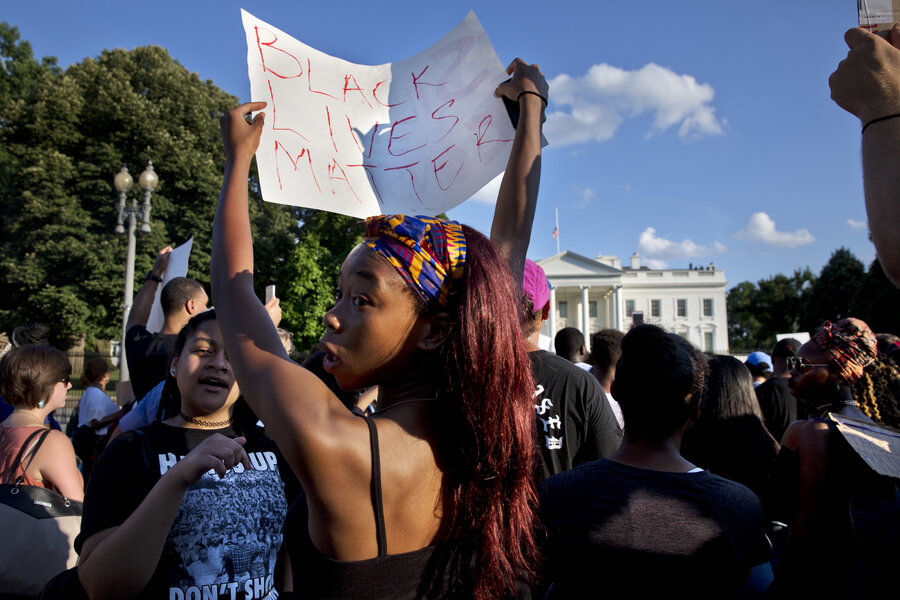Facebook issues streaming guidelines after Castile shooting video goes viral
Loading...
In the past week, thousands of Facebook users have watched two of the biggest news events of the month – the police shooting of Philando Castile and the massacre of Dallas police officers at a protest event – through live streaming videos posted by other users.
The proliferation of forums that allow civilians to step into the shoes of journalists has indelibly changed the news landscape, leaving formerly entertainment oriented websites such as Facebook to grapple with how to maintain these platforms responsibly.
“Live video allows us to see what’s happening in the world as it happens. Just as it gives us a window into the best moments in people’s lives, it can also let us bear witness to the worst,” wrote Facebook in a blog post following Diamond Reynolds’s live streaming of the death of her fiance, Philando Castile.
“We understand the unique challenges of live video. We know it’s important to have a responsible approach,” Facebook added. “That’s why we make it easy for people to report live videos to us as they’re happening.”
Live coverage of flashmobs or sports events are one thing, but knowing that thousands of people had watched a man die in real time forced Facebook to reconsider its live video policy.
“There are a handful of companies at the moment in a position to offer a live-streaming service where individual broadcasts are easily discoverable and shareable,” Harvard Law and computer science professor Jonathan Zittrain told The New York Times. “It just puts companies in positions they weren’t designed to deal with well.”
According to a report on news consumption released by The Pew Charitable Trusts this month, some 80 percent of social media users say they look to Twitter or Facebook as a news resource.
Moreover, fully two thirds of Facebook users (44 percent of the US population) get their news from Facebook. And that number is growing. Although 66 percent of Facebook users use the site for news today, just 47 percent of Facebook users consumed news through the site in 2013.
Over the past decade, Facebook has grown from a Friendster-like entertainment platform for sharing thoughts socially with friends into a mechanism for sharing news articles and opinion posts.
And now, news consumption is giving way to news creation.
Not only can Facebook users click on article links shared by friends, but as evidenced by recent events, they can also use Facebook Live to act as journalists themselves.
While just three percent of social media users say they "often" post videos online, reported Pew, 16 percent "sometimes" do. All told, almost one in five social media is creating and posting videos online.
And although social media websites may be growing significantly in their role as news providers, circulators, and facilitators, the trend isn’t new.
After all, Twitter and other social media sites have been given great (though debated) credit for facilitating the Arab Spring revolutions in Tunisia, Bahrain, Egypt, and Libya.
"It's amazing that we participated via the internet in ousting him," Tarak Mekki said of the ouster of Tunisian president Zine Alabidine Ben Ali, according to the Guardian in 2011. "Via uploading videos. What we did on the internet had credibility and that's why it was successful."
Shortly after it was posted, the graphic Facebook Live video depicting Castile’s death was removed, which Facebook claims was due to a “technical glitch” but which many users thought was censorship by the social media giant.
On Friday, Facebook posted clearer guidelines for Facebook Live video posters.
Facebook officials do monitor Facebook Live streams, the company said in a blog post. And violence or graphic content is still not acceptable, unless it serves a higher purpose. Videos or comments that glorify violence will result in the video being removed, the company said.
Videos of events like the shootings in Dallas or the death of Philando Castile would be unacceptable on an entertainment website, and perhaps in Facebook’s original iteration, they would have been altogether prohibited. Yet now, Facebook and other social media sites recognize their role in enabling news dissemination by the very people who also consume the news.
"Live video on Facebook is a new and growing format," said the company in their statement. "We’ve learned a lot over the past few months, and will continue to make improvements to this experience wherever we can."








